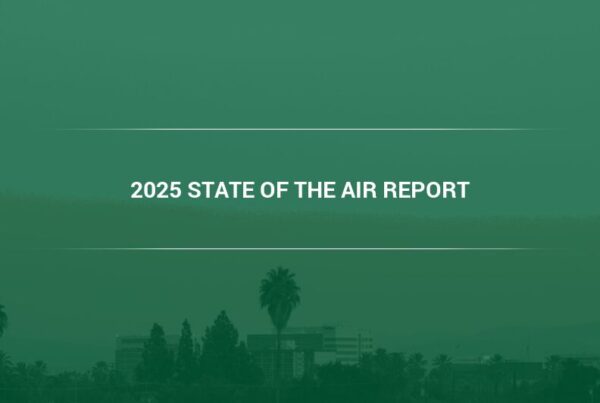Every year around four million people who live in developing countries die due to illnesses caused by pollutants, many of which emanate from open fire cooking and fill up their homes whenever they cook a meal. Open fire air pollution includes particulate pollutants that can cause diseases like lung cancer and pneumonia. Who are the people most impacted by pollutants from open fire cooking, and what can be done to protect their health?
Health Impacts of Open Fire Air Pollution
Around half of the world’s population – over three billion people – still, use pollution heavy traditional stoves to prepare dinner each day. The health impacts of open fire air pollution are well known, and household air pollution is the world’s fourth largest risk to people’s health, especially in developing countries.
“Traditional, open fire cooking methods and implements produce high levels of household air pollutants. Small soot particles are generated from cooking which can penetrate into the lungs, and in poorly ventilated homes built up indoor smoke can be one hundred times higher than recommended levels,” says Kevin Wood, Camfil USA Vice President Sales & Marketing. “These particles can cause health problems like pneumonia, stroke, ischemic heart disorder, chronic obstructive pulmonary disorder (COPD), and lung cancer.” (1)
Exposure to household air pollution will nearly double a child’s chance of childhood pneumonia. Over half of pneumonia-related deaths amongst all children under five years old are due to particulates that come from indoor air pollutants from cooking.
Approximately one-quarter of all deaths from stroke (around 1.4 million deaths a year, half of which are women) can be attributed to the continual exposure to air pollution from home cooking. Further, around 17% of lung cancer deaths a year in adults are due to carcinogens from air pollutants from cooking with solid fuels like wood or charcoal.
Who Is Affected by Open Fire Air Pollution?
When it comes to who is affected by open fire air pollution, China and India have the highest death rates from air pollution in the home. Approximately 45 percent of China’s population still uses open fires to cook, which creates more than one million deaths per year.
In India, 63% percent of the populace depends on solid fuel sources, which is responsible for an additional one million yearly deaths. In Uganda, 97 percent of individuals depend on solid fuel for cooking, and around 13,000 people die from air pollution-related ailments every year.
Children and women are at particular risk due to the fact that they spend up to five hours a day gathering fuel for cooking and spend much more time around the fire. The sheer amount of time spent on the fire can prompt lung and coronary illness, stroke, pneumonia, and cancer as indicated by the World Health Organization.
“The World Health Organization estimates that 35 percent of deaths from chronic respiratory illnesses and 21 percent of lower respiratory infection deaths are from indoor air contamination via pollutants from solid fuel,” explains Wood. “In China, where coal is the primary fuel, open fire air pollution is the second highest cause of lung disease, after smoking. Women who cook inside near open flames additionally have thicker carotid artery blockage and more blood vessel plaque development than their counterparts who utilize oil or gas stoves. Both are indications of coronary disease.” (2)
Families in Guatemala often utilize indoor flames for cooking, as well as to keep warm. Stillbirths and low-weight children are connected to indoor air pollution from cooking with solid fuels. In Guatemala, babies are an average of 85 grams heavier when born if their moms utilize electric or gas stoves rather than traditional stoves.
Possible Solutions to Open Fire Air Pollution?
The Global Alliance for Clean Cookstoves (GACR) is investigating possible solutions to open fire air pollution and pursuing technological methods of bringing clean stoves to developing areas of the world. It’s also organizing financial resources to create quality-control measures. The association itself doesn’t offer clean cookstoves but it works with producers to provide a variety of clean cookstoves to families who need them. (3)
The Alliance wants to create a clean stove program that is self-sustaining, as opposed to similar programs in the past which gave away or sponsored new stoves to a rather limited amount of success. The Alliance highlights the environmental benefits of the program as well as the health benefits, open-fire stoves are responsible for almost as much carbon residue as diesel vehicles and other trucks around the world.
Cleaner cookstoves will also mean changing the way individuals in developing countries cook their meals. Traditional ways of cooking will have to go by the wayside in favor of less pollutant heavy methods.
“Certainly, persuading poor families to change traditional cooking practices is a challenge. Designing an affordable yet hardy stove that won’t pollute is also tough,” says Camfil’s Wood. “For instance, rocket stoves have insulated ignition chambers which allow for a complete burning of firewood. They save money on fuel costs, yet they don’t do a great job at eliminating soot and smoke. More recent designs have integrated fans which produce significantly less smoke, however, they are rather expensive.” (4)
Despite the fact that there are no guidelines that determine what a “clean” cookstove is, the Association is pursuing the creation of cheap stoves that cook with alternative fuel sources including ethanol gel, fuel pellets, and petroleum gas barrels. Solar power is another attractive choice for clean cooking.
Open fire air pollution kills millions of people every year through a variety of respiratory illnesses and impacts poor and developing nations disproportionately. Organizations like GACR are taking action to stop this preventable tragedy, and 2013 saw the distribution of 11.7 million stoves to seven different nations by the Alliance’s partners. GACR hopes to substantially reduce open fire air pollution and have 100 million homes embracing clean cooking by 2020.
If you want to learn more about open fire air pollution, including how to protect yourself from it, visit Camfil USA Air Filtration Company today.
Lynne Laake
Camfil USA Air Filters
T: 888.599.6620,
E: Lynne.Laake@camfil.com
F: Friend Camfil USA on Facebook
T: Follow Camfil USA on Twitter
Y: Watch Camfil Videos on YouTube
Sources:
http://www.newsweek.com/stoves-used-millions-developing-countries-are-silent-killer-285969
http://www.who.int/mediacentre/factsheets/fs292/en/
http://www.environmentalhealthnews.org/ehs/news/2012/not-so-improved-cookstoves



